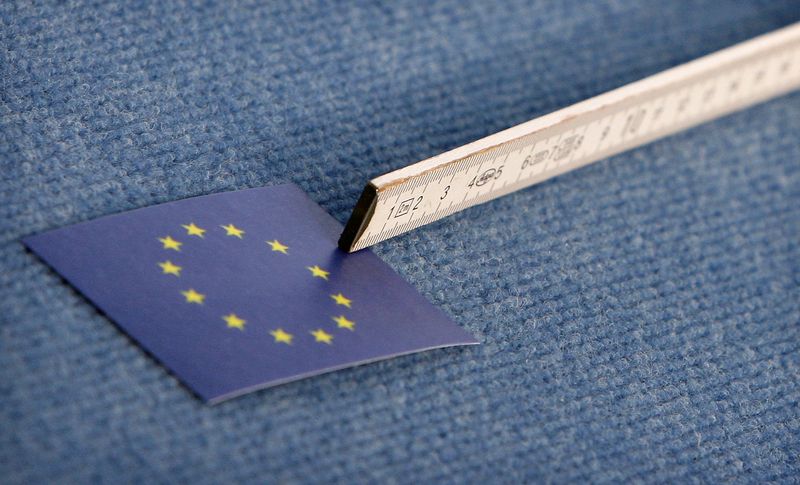By Kate Abnett and Simon Jessop
BRUSSELS (Reuters) - Supporters say it's the world's most ambitious green investment rulebook and could direct huge sums of money into fighting climate change.
Critics say it's a "greenwashing" exercise that puts the European Union's climate change targets at risk.
So what is the EU's sustainable finance taxonomy?
WHAT DOES IT DO?
The EU taxonomy is a complex system to classify which parts of the economy can be marketed as sustainable investments.
It includes a long list of economic activities, plus detailed environmental criteria that each must meet to earn a green label.
Rules for most sectors came into effect this month, covering investments including steel plants, electric cars and building renovations.
The rules for gas and nuclear energy, however, have been long delayed amid intense lobbying from governments who disagree on whether the fuels help fight climate change.
The European Commission proposed a green label for some gas and nuclear investments on Wednesday. It would apply from 2023, unless a majority of European Parliament, or 20 of the EU's 27 countries, veto it.
WHAT'S IT FOR?
The taxonomy does not ban investments in activities not labelled "green", but it limits which ones companies and investors can claim are climate-friendly.
The EU's goal to eliminate its net emissions by 2050 will require huge investments, much of it private funding. The taxonomy aims to make truly green activities more visible and attractive to investors.
With a myriad "eco-friendly" investment products already on the market, the rules aim to stamp out greenwashing, where organisations exaggerate their environmental credentials.
WHO DOES IT APPLY TO?
Providers of financial products -- including pension providers -- in the EU must disclose which investments comply with the taxonomy's climate criteria. For each investment, fund or portfolio, they must disclose what share of underlying investments comply with the rules.
Large companies and listed firms must also disclose what share of their turnover and capital expenditure complies.
That means polluting companies can get recognition for making green investments. For example, if an oil company invested in a wind farm, it could label that expenditure as green.
WHAT MAKES A 'GREEN' INVESTMENT?
The rules classify three types of green investments.
First, those that substantially contribute to green goals -- for example, wind power farms.
Second, those that enable other green activities -- for example, facilities that can store electricity or hydrogen for use at a later time.
Third, transitional activities that cannot yet be made fully sustainable, but which have emissions below industry average and do not lock in polluting assets or crowd out greener alternatives. An example of that would be a cement plant with emissions below 0.72 tonnes of CO2 equivalent per tonne of grey clinker produced.
Gas and nuclear power plants are classed as transitional activities.
WHY HAS IT TAKEN SO LONG?
The taxonomy rules have faced more than a year of intense lobbying from EU governments and industries.
EU policymakers had hoped to finish the climate rules in 2020. In the end, the EU published a first set of rules in April 2021 for sectors including transport and buildings, and delayed the gas and nuclear criteria until now.
The criteria are based on recommendations from expert advisers, designed to comply with science-based goals to fight climate change. But some advisers say scientific criteria were sidelined in the EU's political fighting over the rules, and their recommendations have been overlooked.
Gas and nuclear are particularly sensitive. The Commission's original proposal for the fuels, published in Nov. 2020, excluded gas plants unless they used emissions-capturing technology.
That faced a backlash from countries including Poland and Bulgaria, who say gas investments are needed to quit more-polluting coal. Others, such as Denmark and Luxembourg, say it is not credible to label gas, a fossil fuel, as green.
The final rules class gas plants as sustainable investments, if they meet criteria including a CO2 emissions limit.
IS THAT IT?
No. The taxonomy is not finished.
To be deemed green, an activity must substantially contribute to one of six environmental aims and not harm the other five. The rules published so far cover two aims - fighting climate change, and adapting to its impacts. Criteria for the others will follow this year.

The EU has also delayed until later this year a contentious decision on whether to label agriculture, potentially including intensive farming, as climate-friendly.
Brussels is also considering expanding the system. One option is a list of polluting activities, to force providers of financial products to flag "unsustainable" investments.